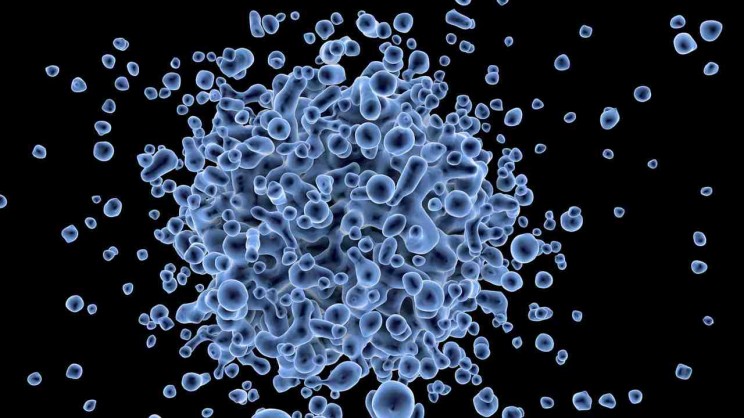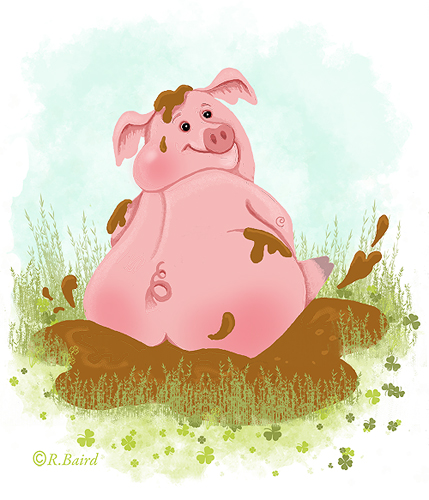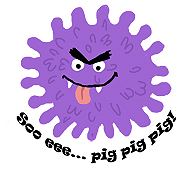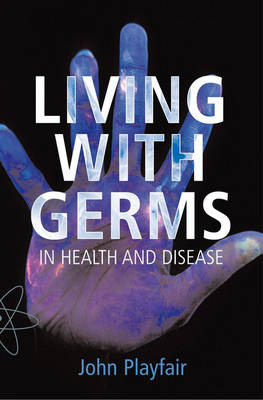new posts in all blogs
Viewing: Blog Posts Tagged with: Germs, Most Recent at Top [Help]
Results 1 - 13 of 13
How to use this Page
You are viewing the most recent posts tagged with the words: Germs in the JacketFlap blog reader. What is a tag? Think of a tag as a keyword or category label. Tags can both help you find posts on JacketFlap.com as well as provide an easy way for you to "remember" and classify posts for later recall. Try adding a tag yourself by clicking "Add a tag" below a post's header. Scroll down through the list of Recent Posts in the left column and click on a post title that sounds interesting. You can view all posts from a specific blog by clicking the Blog name in the right column, or you can click a 'More Posts from this Blog' link in any individual post.

By: DanP,
on 7/2/2015
Blog:
OUPblog
(
Login to Add to MyJacketFlap)
JacketFlap tags:
Books,
love,
romance,
science,
germs,
microbes,
DNA,
kiss,
genes,
kissing,
earth sciences,
bacteria,
*Featured,
genomes,
Science & Medicine,
life sciences,
Earth & Life Sciences,
Biocode,
Dawn Field,
The Double Helix with Dawn Field,
double helix,
DNA design,
DNA of kissing,
DNA studies,
international day of kissing,
Add a tag
Another ‘Awareness Day’, International Kissing Day, is coming up on July 6. It might not seem obvious but kissing, like most subjects can now be easily linked to the science of DNA. Thus, there could be no more perfect opener for my Double Helix column, given the elegance and beauty of a kiss. To start, there is the obvious biological link between kissing and DNA: propagation of the species. Kissing is not only pleasurable but seems to be a solid way to assess the quality and suitability of a mate.
The post International Kissing Day and DNA appeared first on OUPblog.

By: Hannah Paget,
on 7/25/2014
Blog:
OUPblog
(
Login to Add to MyJacketFlap)
JacketFlap tags:
Earth & Life Sciences,
microbiome,
microbial,
Dalhousie University,
germaphobe,
John Archibald,
Microbial Biodiversity,
microorganisms,
One plus one equals one,
cyanobacteria,
Books,
cancer,
science,
biology,
bugs,
plants,
germs,
microbes,
molecular,
ecosystem,
antibiotics,
amoeba,
bacteria,
symbiosis,
*Featured,
Science & Medicine,
Health & Medicine,
chloroplasts,
mitochondria,
Add a tag
By John Archibald
We humans have a love-hate relationship with bugs. I’m not talking about insects — although many of us cringe at the thought of them too — but rather the bugs we can’t see, the ones that make us sick.
Sure, microorganisms give us beer, wine, cheese, and yoghurt; hardly a day goes by without most people consuming food or drink produced by microbial fermentation. And we put microbes to good use in the laboratory, as vehicles for the production of insulin and other life-saving drugs, for example.
But microbes are also responsible for much of what ails us, from annoying stomach ‘bugs’ to deadly infectious diseases such as tuberculosis and plague. Bacteria and viruses are even linked to certain cancers. Bugs are bad; antibiotics and antivirals are good. We spend billions annually trying to rid ourselves of microorganisms, and if they were to all disappear, well, all the better, right?
This is, of course, nonsense. Even the most ardent germaphobe would take a deep breath and accept the fact that we could no more survive without microbes than we could without oxygen. No matter how clean we strive to be, there are 100 trillion bacterial cells living on and within our bodies, 10 times the number of human cells that comprise ‘us’. Hundreds of different bacterial species live within our intestines, hundreds more thrive in our mouths and on our skin. Add in the resident viruses, fungi, and small animals such as worms and mites, and the human body becomes a full-blown ecosystem, a microcosm of the world around us. And like any ecosystem, if thrown off-balance bad things can happen. For example, many of our ‘good’ bacteria help us metabolize food and fight off illness. But after a prolonged course of antibiotics such bacteria can be knocked flat, and normally benign species such as ‘Clostridium difficile’ can grow out of control and cause disease.

Given the complexity of our body jungle, some researchers go as far as to propose that there is no such thing as a ‘human being’. Each of us should instead be thought of as a human-microbe symbiosis, a complex biological relationship in which neither partner can survive without the other. As disturbing a notion as this may be, one thing is indisputable: we depend on our microbiome and it depends on us.
And there is an even more fundamental way in which the survival of Homo sapiens is intimately tied to the hidden microbial majority of life. Each and every one of our 10 trillion cells betrays its microbial ancestry in harboring mitochondria, tiny subcellular factories that use oxygen to convert our food into ATP, the energy currency of all living cells. Our mitochondria are, in essence, domesticated bacteria — oxygen-consuming bacteria that took up residence inside another bacterium more than a billion years ago and never left. We know this because mitochondria possess tiny remnants of bacterium-like DNA inside them, distinct from the DNA housed in the cell nucleus. Modern genetic investigations have revealed that mitochondria are a throwback to a time before complex animals, plants, or fungi had arisen, a time when life was exclusively microbial.
As we ponder the bacterial nature of our mitochondria, it is also instructive to consider where the oxygen they so depend on actually comes from. The answer is photosynthesis. Within the cells of plants and algae are the all-important chloroplasts, green-tinged, DNA-containing factories that absorb sunlight, fix carbon dioxide, and pump oxygen into the atmosphere by the truckload. Most of the oxygen we breathe comes from the photosynthetic activities of these plants and algae—and like mitochondria, chloroplasts are derived from bacteria by symbiosis. The genetic signature written within chloroplast DNA links them to the myriad of free-living cyanobacteria drifting in the world’s oceans. Photosynthesis and respiration are the biochemical yin and yang of life on Earth. The energy that flows through chloroplasts and mitochondria connects life in the furthest corners of the biosphere.
For all our biological sophistication and intelligence, one could argue that we humans are little more than the sum of the individual cells from which we are built. And as is the case for all other complex multicellular organisms, our existence is inexorably linked to the sea of microbes that share our physical space. It is a reality we come by honestly. As we struggle to tame and exploit the microbial world, we would do well to remember that symbiosis—the living together of distinct organisms—explains both what we are and how we got here.
John Archibald is Professor of Biochemistry and Molecular Biology at Dalhousie University and a Senior Fellow of the Canadian Institute for Advanced Research, Program in Integrated Microbial Biodiversity. He is an Associate Editor for Genome Biology & Evolution and an Editorial Board Member of various scientific journals, including Current Biology, Eukaryotic Cell, and BMC Biology. He is the author of One Plus One Equals One: Symbiosis and the Evolution of Complex Life.
Subscribe to the OUPblog via
email or
RSS.
Subscribe to only science and medicine articles on the OUPblog via
email or
RSS.
Image credit: Virus Microbiology. Public domain via Pixabay
The post Microbes matter appeared first on OUPblog.


| Title: Deadly Author: Julie Chibbaro Publisher: Simon and Schuster ISBN: 978-0689857393 |
May Contain Spoilers
From Amazon:
| Join the search for Typhoid Mary in this early twentieth-century CSI. Now in paperback! Prudence Galewski doesn’t belong in Mrs. Browning’s esteemed School for Girls. She doesn’t want an “appropriate” job that makes use of refinement and charm. Instead, she is fascinated by how the human body works—and why it fails. Prudence is lucky to land a position in a laboratory, where she is swept into an investigation of a mysterious fever. From ritzy mansions to shady bars and rundown tenements, Prudence explores every potential cause of the disease to no avail—until the volatile Mary Mallon emerges. Dubbed “Typhoid Mary” by the press, Mary is an Irish immigrant who has worked as a cook in every home the fever has ravaged. But she’s never been sick a day in her life. Is the accusation against her an act of discrimination? Or is she the first clue in solving one of the greatest medical mysteries of the twentieth century? |
Review:
When I first sat down with Deadly, I was just a bit apprehensive. The first few pages didn’t exactly grab me, and I was afraid I was in for a slow, dull read. My apprehension quickly disappeared. This book is fantastic, and I quickly started looking at the world in a whole new way. Bacteria? What an interesting organism! When Prudence was finally allowed a peek through a microscope, her enthusiasm was contagious. What is this tiny, living thing that makes people so ill? Just like Prudence, I longed to learn more about typhoid fever and how to stop its persistent spread through 1906 New York.
I love a book that does make me think, and Deadly is one of those books. Prudence is such a smart young woman, curious about science and the human body, but because she is woman, her inquisitive nature is destined to go nowhere. She is enrolled at a school to learn how to run a household and be a proper wife, which bores her to tears. She wants to do something meaningful; she wants to help people, so nobody else has to watch a loved one die of illness. When she is hired to work at the Department of Health and Sanitation, she is given an outlet for her curiosity. Hired because of her neat penmanship and ability to type, she is quickly challenged to use her mind, too. Her supervisor’s current task is to find the cause of the typhoid fever outbreak and put an end to it before anyone else dies of the disease.
Deadly is a character driven book, and what characters it has! I loved Prudence, despite her cool reserve. She isn’t one to easily show her emotions, but she is constantly plagued by them. Because she wants to make a good impression on her new coworkers, she won’t allow herself to appear weak or womanly before them. Instead, she’s all business; she wants to prove that she is worthy of her new position, and she devotes herself to assisting Mr. Soper. She is also still hurting from her brother’s death and the disappearance of her father, who is missing in action from the Spanish American War. Beca

By: Kirsty,
on 7/25/2011
Blog:
OUPblog
(
Login to Add to MyJacketFlap)
JacketFlap tags:
biology,
chemistry,
germs,
immune system,
antibodies,
human body,
bacteria,
*Featured,
jonathan crowe,
Physics & Chemistry,
chemistry for the biosciences,
sciwhys,
Environmental & Life Sciences,
infections,
white blood cells,
antibody,
invader,
battalion,
Health,
Science,
Add a tag
By Jonathan Crowe
Each day of our lives is a battle for survival against an army of invaders so vast in size that it outnumbers the human population hugely. Yet, despite its vastness, this army is an invisible threat, each individual so small that it cannot be seen with the naked eye. These are the microbes – among them the bacteria and viruses – that surround us every day, and could in one way or another kill us were it not for our immune system, an ingenious defence mechanism that protects us from these invisible foes.

I really had a lack of ideas for this one. Or maybe I just didn’t have any ideas that, when attempted, were satisfying to me. So I’m just throwing up a quicky, non-sensical solution to get it over with and out of my system. I had been drawing guitar players, so just added the germs, [...]
 My submission for Illustration Friday's "Germs" theme is a bit late this week, it is called "Where Germs Live". It has been pretty exciting around here because PBS American Masters series came to our house to film John for the David Geffen episode. The creator, Susan Lacy is an amazing woman. She directs, interviews and executive produces the show. She has interviewed 20+ people already for the Geffen story and it includes Steven Spielberg, Jeffrey Katzenberg, Joni Mitchell, Elliot Roberts to name a few. John was amazing in the interview and the whole crew was mesmerized by his stories of the groundbreaking music and the business of managing the great artists in the 70's.
My submission for Illustration Friday's "Germs" theme is a bit late this week, it is called "Where Germs Live". It has been pretty exciting around here because PBS American Masters series came to our house to film John for the David Geffen episode. The creator, Susan Lacy is an amazing woman. She directs, interviews and executive produces the show. She has interviewed 20+ people already for the Geffen story and it includes Steven Spielberg, Jeffrey Katzenberg, Joni Mitchell, Elliot Roberts to name a few. John was amazing in the interview and the whole crew was mesmerized by his stories of the groundbreaking music and the business of managing the great artists in the 70's.
In case you might think I have gone off the deep end with this illustration please notice the article and real home below. I now feel completely VALidated :)
2009 Valerie Walsh
TOILET HOUSE

 The Toilet-shaped House has a very unique design and was built by Sim Jae-duck, the chairman of the organizing committee of the Inaugural General Assembly of the World Toilet Association, and he hopes his toilet house will highlight the global need for better sanitation. The Toilet-Shaped House is in fact named Haewoojae which signifies in Korean a place of sanctuary, where one can solve ones worries, Sim Jae-duck opened what is billed as the world's one and only toilet house to mark the launch of his World Toilet Association. The steel, white concrete and glass house, with a symbolic opening in the roof is a 419 sq, m structure with two bedrooms, two guestrooms and other rooms, the two-story house of course features three deluxe toilets.Unlike the giant toilet in which they are located they are not see-through affairs. If you would like to visit this house you can go to Sim Jae-duck's native city of Suweon 40 km south of Seoul.
The Toilet-shaped House has a very unique design and was built by Sim Jae-duck, the chairman of the organizing committee of the Inaugural General Assembly of the World Toilet Association, and he hopes his toilet house will highlight the global need for better sanitation. The Toilet-Shaped House is in fact named Haewoojae which signifies in Korean a place of sanctuary, where one can solve ones worries, Sim Jae-duck opened what is billed as the world's one and only toilet house to mark the launch of his World Toilet Association. The steel, white concrete and glass house, with a symbolic opening in the roof is a 419 sq, m structure with two bedrooms, two guestrooms and other rooms, the two-story house of course features three deluxe toilets.Unlike the giant toilet in which they are located they are not see-through affairs. If you would like to visit this house you can go to Sim Jae-duck's native city of Suweon 40 km south of Seoul.
via-Reuters & Spluch

By:
Roberta Baird,
on 10/2/2009
Blog:
A Mouse in the House
(
Login to Add to MyJacketFlap)
JacketFlap tags:
pig,
Illustration Friday,
children's illustration,
flu,
digital art,
roberta baird,
a mouse in the house,
mud,
germs,
ABC Children's Picture Book Competition,
swine flu,
Add a tag


Be kind to the swine. Don’t give them the blame.
Treat all pigs with kindness. Shake a hoof, ask their name!
As a gesture of kindness, consider biscuits and tea.
I’ve heard roast beef and pound cake makes a pig squeal with glee!
Or…
You could take a piggy to market and buy some new shoes…
add some bloomers, some stockings and a handbag or two!
Yes be kind to the pig. Turn his gray skies to blue.
But first wash your hands. Please don’t give him Swine Flu!
Achoo!
_R.Baird
Three more days to vote…. Won’t you please help us win the ABC Children’s Picture Book Competition? Voting Link:
http://www.abcbookcompetition.org/5th_comp/SorryDoesntCleanItUp.html


By:
Roberta Baird,
on 10/2/2009
Blog:
A Mouse in the House
(
Login to Add to MyJacketFlap)
JacketFlap tags:
ABC Children's Picture Book Competition,
swine flu,
pig,
Illustration Friday,
children's illustration,
flu,
digital art,
roberta baird,
a mouse in the house,
mud,
germs,
Add a tag


Be kind to the swine. Don’t give them the blame.
Treat all pigs with kindness. Shake a hoof, ask their name!
As a gesture of kindness, consider biscuits and tea.
I’ve heard roast beef and pound cake makes a pig squeal with glee!
Or…
You could take a piggy to market and buy some new shoes…
add some bloomers, some stockings and a handbag or two!
Yes be kind to the pig. Turn his gray skies to blue.
But first wash your hands. Please don’t give him Swine Flu!
Achoo!
_R.Baird
Three more days to vote…. Won’t you please help us win the ABC Children’s Picture Book Competition? Voting Link:
http://www.abcbookcompetition.org/5th_comp/SorryDoesntCleanItUp.html

By: Kirsty,
on 5/6/2009
Blog:
OUPblog
(
Login to Add to MyJacketFlap)
JacketFlap tags:
Health,
UK,
Science,
Current Events,
A-Featured,
disease,
germs,
swine flu,
antibiotics,
John Playfair,
Add a tag

John Playfair’s short book Living with Germs: In Health and Disease takes the reader through the essentials of infectious organisms - bacteria, viruses, protozoa and the rest - and of our defences against them, the immune system with its powerful weapons and occasionally dangerous side effects. The alternatives - antibiotics and public health measures - are also considered and there is a look ahead at some of the significant problems to come in the future. In the post below, John Playfair reminds us that infectious diseases don’t stand still for long.
The death of two sumo wrestlers last year from a new strain of herpes gladiatorum (’scrumpox’ to rugby players) is not only bad news for Japan’s number one sport but a reminder that infectious diseases do not stand still for long.
 MRSA, drug-resistant tuberculosis, malaria, and the permanently shifting AIDS viruses have been for years at the very top of the list of world health problems, and now a new hybrid flu virus from pigs, containing additional genes from both avian and human strains has unexpectedly leapfrogged all these to potential pandemic status (WHO threat level 5). With global warming already introducing ‘tropical’ insect-borne diseases such as malaria, leishmaniasis, and dengue to temperate zones such as Europe and North America, and with vaccines still lacking for all fungal, protozoal, and worm infections, it is no longer thinkable to say, as the US Surgeon-General rashly did 40 years ago, that ‘it is time to close the book on infectious diseases.’
MRSA, drug-resistant tuberculosis, malaria, and the permanently shifting AIDS viruses have been for years at the very top of the list of world health problems, and now a new hybrid flu virus from pigs, containing additional genes from both avian and human strains has unexpectedly leapfrogged all these to potential pandemic status (WHO threat level 5). With global warming already introducing ‘tropical’ insect-borne diseases such as malaria, leishmaniasis, and dengue to temperate zones such as Europe and North America, and with vaccines still lacking for all fungal, protozoal, and worm infections, it is no longer thinkable to say, as the US Surgeon-General rashly did 40 years ago, that ‘it is time to close the book on infectious diseases.’
Three problems stand out. Drugs - loosely known as ‘antibiotics’ - have been very successful against some bacterial infections but much less so against viruses, where years of expensive research have been needed to identify those few weak spots where a drug can damage the virus but not its host (bacteria have far more of these). Vaccines, on the contrary, have a better record against viruses than against bacteria, and if any more infections are to follow smallpox into oblivion they will probably be viral - polio and the common childhood viruses being the most likely candidates. There remains the stumbling block of the immune system, our main protection against infection and the point at which successful vaccines operate. Almost a century ago it was discovered that with ‘toxic’ diseases like diphtheria and tetanus, all you needed for protection was a sufficient level of antibody in the blood.
But unfortunately this is not true of many infections: antibody may be ineffective, or directed at the wrong target, or actually harmful. Sometimes immune cells must go into action, killing viruses or releasing messenger molecules known as cytokines. But even cytokines can be dangerous; in fact they may account for the curious fact that swine flu appears to be more deadly in younger victims with active immune systems. So we must be prepared for more surprises.

 If you’re looking for a speaker for a writers’ conference, school presentation, or other event, please download our new Directory of Children’s Authors and Illustrators Who Make School Visits.
If you’re looking for a speaker for a writers’ conference, school presentation, or other event, please download our new Directory of Children’s Authors and Illustrators Who Make School Visits.
Just click on the “author directory” page above.
No Tags
Yesterday was the final day to submit your information for a free listing in our new Directory of Children’s Authors & Illustrators Who Make School Visits.
 Thank you to those of you who submitted your information. We’ll let you know as soon as the directory is available later this week.
Thank you to those of you who submitted your information. We’ll let you know as soon as the directory is available later this week.
For those of you who didn’t submit your information by the deadline, we’ll be updating the directory throughout the school year, and we’ll let you know when we’ll be accepting submissions once again.
We hope this is the BEST year EVER for children’s authors and illustrators who make school visits!
author directoryauthor directoryauthor directory
If you’re a children’s writer and/or illustrator who makes school visits, don’t forget to submit your information for a free listing in our Directory of Children’s Authors & Illustrators Who Make School Visits.
But the deadline for submission is TOMORROW.
This new ebook directory will be free for schools and other organizations that look for authors to make presentations during the school year.
Our goal is to have children’s authors/illustrators listed from every single state in the USA.
So please represent your state if you’re a published children’s book author/illustrator who makes school visits.
Simply click here for the submission form.
author directoryauthor directoryauthor directory
 If you’re a children’s author and/or illustrator who makes school visits, you’ll want to be listed in our School Visits Directory.
If you’re a children’s author and/or illustrator who makes school visits, you’ll want to be listed in our School Visits Directory.
This new ebook will be available in September for schools and other groups that look for authors and illustrators who make presentations.
directory-submission-formcwk-wp.pdf
Download our submission form and follow the directions to submit your personal information for this directory. It’s FREE.
author directory childrens authors who make school visits childrens illustrators school visits directoryauthor directory childrens authors who make school visits childrens illustrators school visits directoryauthor directory,
childrens authors who make school visits,
childrens illustrators,
school visits directory











 If you’re looking for a speaker for a writers’ conference, school presentation, or other event, please download our new Directory of Children’s Authors and Illustrators Who Make School Visits.
If you’re looking for a speaker for a writers’ conference, school presentation, or other event, please download our new Directory of Children’s Authors and Illustrators Who Make School Visits. Thank you to those of you who submitted your information. We’ll let you know as soon as the directory is available later this week.
Thank you to those of you who submitted your information. We’ll let you know as soon as the directory is available later this week.
hehe, eveil looking little things! Except for the hula-dancer. fun.
fun. 
hilarious! I’m diggin’ that little germ in the hula skirt. great style and color, too.
LOL I love this one. Is that the Mr. ??
Ahaha..great illo. Love the hula skirt and having them rockin on…ahahaha
Love it,so funny!
Hehe…. fun interpretation of germs.
This is awesome! I love the different take and the playfulness. The whole thing just sings. Love it.
Hahahahahahahaha oh my, you sure do hit the funny bone Paula!